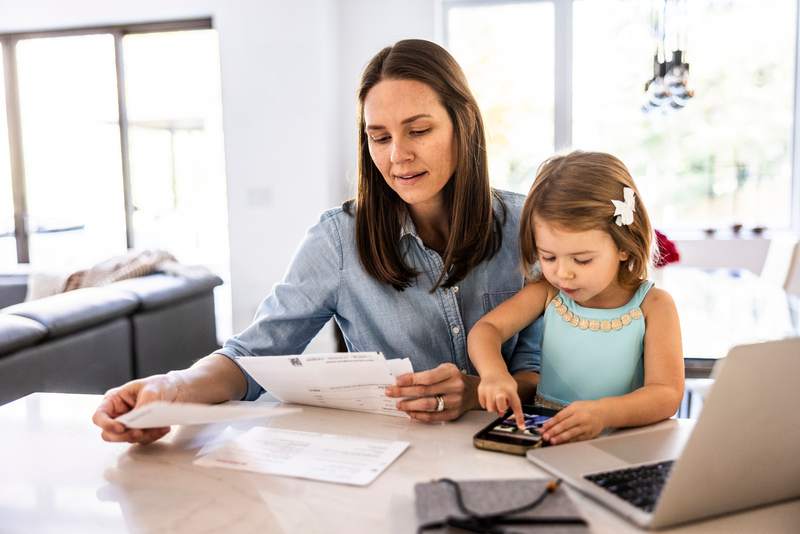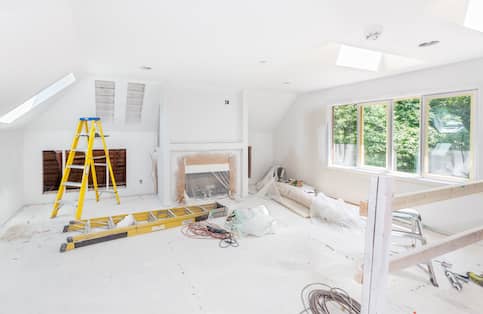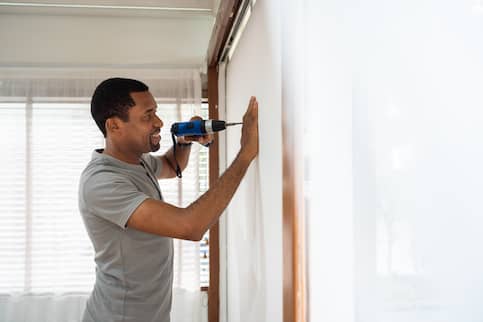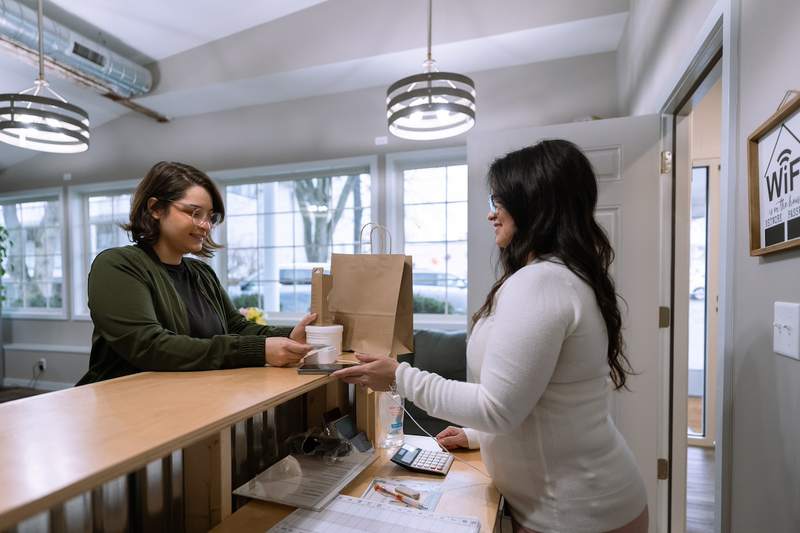Making home renovations and repairs can improve your quality of life and keep your home in prime condition, but they always come with a cost. Major repairs, remodels and additions can be pricey. If you’re considering investing in your property, you should research home improvement grants to see if you qualify.
What Is A Home Improvement Grant?
Home improvement grants are programs that will award you money to make home repairs and renovations. These programs can be offered from governments of all levels: federal, state, county and city.
Home improvement grants differ from home improvement loans. Loans require you to pay them back (usually with interest), whereas grants award you money that you don’t have to pay back. It’s important to keep in mind that many of the programs do have conditions. For example, if you refinance, sell or transfer the title within a certain amount of time, you may have to repay some or all of the money.
See What You Qualify For
Buy A Home
Discover mortgage options that fit your unique financial needs.

Refinance
Refinance your mortgage to have more money for what matters.
Tap Into Equity
Use your home’s equity and unlock cash to achieve your goals.
Who Is Eligible For Government Home Improvement Grants?
There are many different home improvement grants and your eligibility can vary depending on many factors. Each grant can have different qualifications, but in general, they follow at least one of these requirements:
- Income: Home improvement grants are generally given to homeowners with lower income. For example, grants from the USDA have a very-low-income limit to qualify.
- Location: Home improvement grants can be highly localized. Your county, town or city may have specific programs only offered to residents.
- Renovation or repair type: Agencies offering grants can prioritize certain renovations and repairs over others. For instance, you’re more likely to find home improvement grants to repair your roof than to remodel a functioning bathroom.
- Applicant demographics: You may be more likely to qualify based on aspects of your demographics. For example, there are home improvement grants specifically for seniors and veterans.
Free Grants For Homeowners For Repairs Or Renovations
Let’s go over some common home improvement grant programs. Note that there are likely more options for you depending on your location. What follows are some of the more general grant programs.
Home Improvement Grants Through HUD
The Department of Housing and Urban Development (HUD) offers home improvement grant programs on the federal level. But while HUD is a federal organization, its grants can limit the eligible locations. These grant programs include:
- The HOME Investment Partnerships Program: This program focuses on creating affordable housing for low-income Americans. Participating jurisdictions (aka PJs, such as states, counties and cities) help fund the rehabilitation, repair and reconstruction of owner-occupied homes. Eligibility specifics and funding amounts vary by PJ.
- Community Development Block Grant (CDBG) Program: The CDBG is a variety of grants that help communities address specific issues. These include disaster recovery programs and programs trying to limit foreclosures. Its goal is to provide affordable housing, anti-poverty programs and infrastructure development. The funds are supplied federally but are administered at the state and local levels.
- Rural home improvement and repair loans/grants: Also known as the Section 504 Home Repair program, this program offers a grant for elderly, very-low-income homeowners in rural areas to make repairs and remove health and safety hazards.
HUD also offers many loan programs. While this money does need to be paid back, these loans may come with lower interest rates than other home improvement loans.
Home Improvement Grants For Veterans
The Department of Veterans Affairs (VA) offers home improvement grants to veterans with disabilities. You’ll need to own the home or be in the process of buying it, and you’ll have to have a qualifying service-related disability. Qualifying disabilities include:
- The loss or loss of use of more than one limb
- The loss or loss of use of a lower leg along with the lasting effects of a natural disease or injury
- Blindness in both eyes
- Certain severe burns
- The loss or loss of use of one foot or leg after September 11, 2001, which prohibits you from walking or standing without the help of a cane, braces, crutches or a wheelchair
Note that, according to the VA, “Only 120 Veterans and service members each fiscal year (FY) can qualify for a grant based on the loss of one extremity after September 11, 2001, as set by Congress. A fiscal year runs from October 1 through September 30.”
Specially Adapted Housing (SAH) Grant For Veterans With Disabilities
This grant is for veterans that have suffered severe burns or injuries that drastically impact their mobility. To qualify, veterans will need to have experienced loss of limbs, blindness or a combination of multiple injuries resulting in an end of service.
The grant can be used to build a new home, adapt an existing home and even help pay off the mortgage of a house that was not purchased with a VA loan. The SAH Grant can award a maximum of $109,986 in the 2023 fiscal year.
Special Home Adaptation (SHA) Grant For Veterans With Disabilities
The SHA grant enables eligible veterans to make modifications to their homes or purchase a previously adapted home to meet their new needs. To qualify for this grant, veterans must have the loss or loss of use of both hands, certain severe burns or qualifying respiratory or breathing injuries.
SHA grants can provide up to $22,036 in the 2023 fiscal year. It’s important to note that you can use funding from either an SAH or an SHA grant up to six times throughout your life, so the funding isn’t restricted to use in a single year.
Temporary Residence Adaptation (TRA) Grant For Veterans With Disabilities
The TRA is available to qualifying veterans and active service members who are living with a family member temporarily and need to adapt the home to make it livable. Funding levels for this grant depend on which of the above grants you would qualify for if this was your permanent home.
If you qualify for a SAH grant, you can get up to $44,299 for the 2023 fiscal year. If you qualify for a SHA grant, the available funding would be at $7,910 for 2023.
Weatherization Assistance Program
The US Department of Energy (DOE) will help eligible homeowners (and renters) weatherize their home through its Weatherization Assistance Program (WAP). The WAP helps low-income households improve the energy efficiency of their home.
To be eligible, you must be below 200% of the federal poverty line, or below 60% of the state median income. Whichever it is depends on your state, as the qualifications vary by location. Each state has its own Weatherization Administrator which runs the WAP.
Loan Alternatives To Government Grants For Home Repairs And Remodeling
If you don’t qualify for a grant program, you can take advantage of loan options to make necessary home repairs or desired renovations. Some of these options include government programs, which come with benefits like lower interest rates.
HUD Section 504 Repair Loans
The HUD Section 504 Home Repair Loan is a loan to low-income homeowners in rural areas. It can be used for repair improvements, modernization of homes or the removal of any health or safety hazards. According to the USDA, requirements for the loan are as follows:
- Own and occupy the house
- Be unable to obtain affordable credit elsewhere
- Have a household income that does not exceed the very-low-income limit by county.
- Live in a USDA-eligible area
Home Improvement Loans For Native Americans
The Section 184 Indian Home Loan Guarantee Program provides financial assistance to Native Americans and Alaska Native families. Section 184 loans can be used both on and off native lands for single-family home purchases, new construction, refinancing and rehabilitation of existing homes in eligible areas.
This program was established in 1992 to increase access to capital and grow homeownership in Native American communities. It assists Native American homeowners with low down payments and flexible underwriting.
Eligible borrowers include:
- American Indians or Alaska Natives who are members of a federally recognized tribe
- Federally recognized Indian tribes
- Tribally designated housing entities
- Indian Housing Authorities
Home Equity Loan
A home equity loan is a second mortgage that you take out against the equity you have in your home. You pay it monthly, just like your regular mortgage. After you’ve been approved for the loan, you receive the amount in a lump sum. You’ll pay this amount back over the loan term.
A home equity loan is great if you need to renovate or repair your home. The money can be used for whatever costs arise during the home improvement project.
Cash-Out Refinance
Similar to a home equity loan, a cash-out refinance creates a mortgage and turns your equity into a lump sum payment. The difference here is that a home equity loan creates a second mortgage, whereas a cash-out refinance replaces your original mortgage. You can use this lump sum to improve your home. And unlike a home equity loan, you’ll only have one mortgage payment to worry about.
The Bottom Line
Home improvement grants can be hard to come by. While there are even more options available than what this article has listed, there are specific requirements you have to meet. If you can’t meet those requirements, it’s good to consider your loan options.

Victoria Araj
Victoria Araj is a Staff Writer for Rocket Companies who has held roles in mortgage banking, public relations and more in her 15-plus years of experience. She has a bachelor’s degree in journalism with an emphasis in political science from Michigan State University, and a master’s degree in public administration from the University of Michigan.












